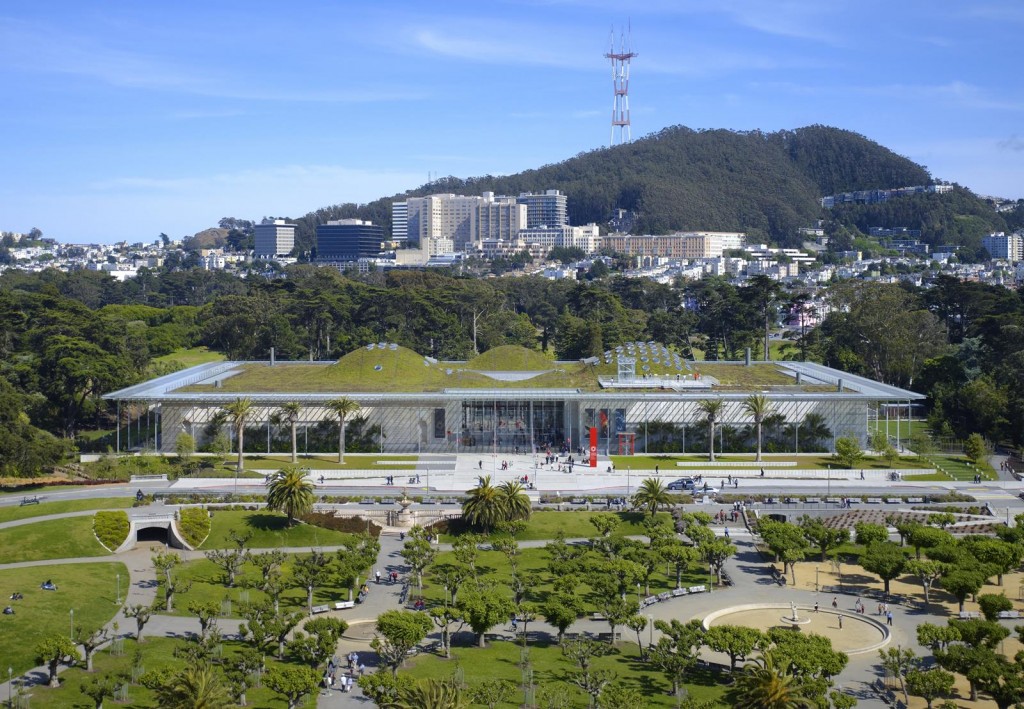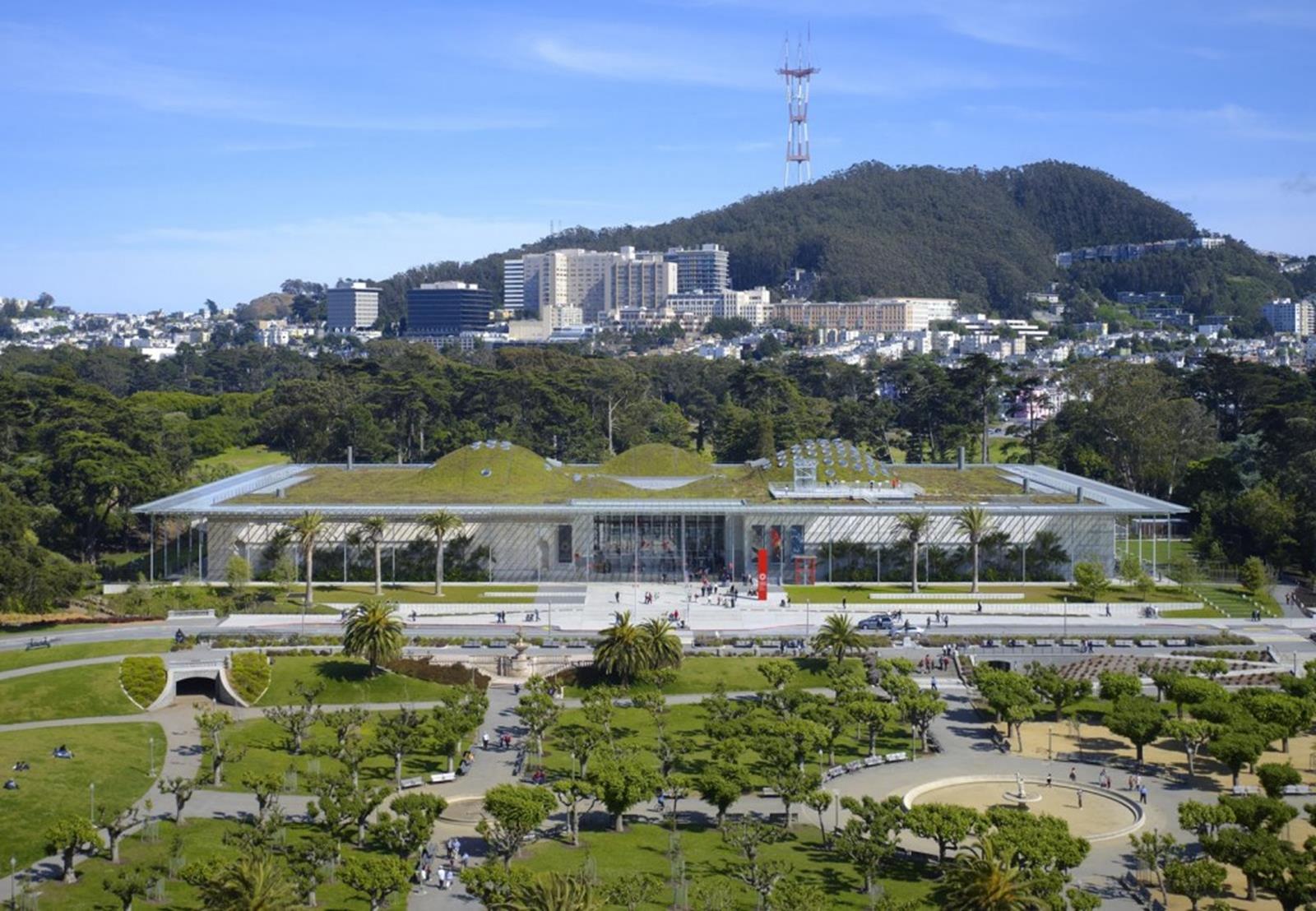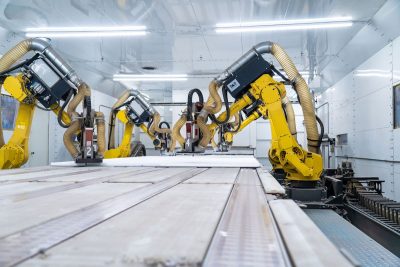The California Academy of Science, founded in 1853, is one of San Francisco’s oldest public museums. Located in Golden Gate Park, this preeminent natural history museum and research center has reinvented itself with a new building, new exhibits and a contemporary focus directed toward understanding the past as a guide to building a sustainable natural world for the future.
This new approach is demonstrated not only in exhibits that challenge visitors to participate in creating a sustainable world but also is seen in the building’s design, which makes it the largest “green” and most sustainable museums in the world. Unlike most museums, there aren’t many walls, barriers or dark hallways separating exhibit areas. Its design offers open views with sightlines reaching from one exterior glass wall an other. Its floor plan allows an easy flow throughout the building.
Here are some highlights:
The Planetarium is the largest all-digital planetarium in the world. Its current show, Journey to the Stars, is followed with a chat with scientists about what’s happening today in the universe.
The Aquarium is home to 38,000 live animals from around the world that represent more than 900 separate species. While the main exhibit area is on the lower level, the albino alligator in Swamp and African penguins at the African Hall are on the main floor.
Natural History exhibits throughout the museum focus on current issues about evolution and the future of life on Earth. It is in these areas that the museum draws from its 150-plus years of research and 26 million-specimen collection. Static and interactive displays challenge students to participate in formulating solutions for a sustainable future. A highlight is the Rainforests of the World walk-through living exhibit. It has more than 1,600 slithering, swimming, flying, crawling animals plus numerous plants. The journey starts above the Costa Rican treetops and winds its way down the eco-chain to flooded Amazon forest.
The Living Roof has a 2.5 acre California native plant garden and offers a great photo-op of the city’s skyline. Academy docents offer insights about the garden and its wildlife habitats and the green energy systems located on the roof.
Explore and Learn for Groups
The Academy education department has developed many packaged learning experiences for youth groups. Most visit the museum for at least four hours and, when making reservations, the museum’s coordinators are happy to assist in customizing a learning plan to match the group’s interests. Options include activities specific to age/learning levels (grades K-12), independent or group exploration, tickets for timed events, group workshops with scientists, expanded discovery of certain exhibit areas and/or special exhibitions, and behind-the-scenes tours.
Two new programs for youth groups are:
Passport to Science (middle and high school level): Using a personal workbook, participants follow a path through the museum and learn about Academy research activities in nine areas of study. Students use scientific research and collection techniques to define what can be done to protect the natural world by using sustainable applications and what changes they can personally make in their daily life to combat climate change. Upon completion, each receives the Academy’s PTS Ambassador certificate.
Penguins + Pajamas (age six years and older): From 6 p.m. to 8 a.m. on select Friday nights, the museum hosts a sleep-over with up-close nighttime views of the animals and other activities. There are special talks at Penguin Central and The Swamp, sing-along at the Discovery Tidepool, movies and storytelling at lobby locations and stargazing at the Planetarium and Living Roof. Snacks are served at bedtime and a continental breakfast in the morning. Dinner plans also available. Group sleeping areas are assigned at various museum locations.
Contact:
California Academy of Science
55 Music Concourse Dr.
San Francisco, CA 94118
415-379-8000, www.calacademy.org
Travel Industry Sales: 415-379-5210, toursales@calacademy.org
Sidebar: Building a Green Museum
Aging buildings, earthquake damage and growing collections inspired the creation of the “new” California Academy of Science. The aim of the new facility was not only to provide a state-of-the-art museum to accommodate its exhibits, animals, collections and research facilities, but also to demonstrate the importance of conservation of resources to support a sustainable future. From the depths of the building’s foundation to its Living Roof, almost every element of the building is “green.” Examples include exterior glass walls and skylight systems that bring natural light and air to 90 percent of the building’s occupied space resulting in reduced energy consumption (35 percent below required green building codes). It also replaced raw industrial materials with recycled blue jeans in making the interior wall insulation. Coded signs are placed throughout the Academy identifying examples of the museum’s applied Green technologies and strategies. Lectures and facility tours on this topic are available to groups.







